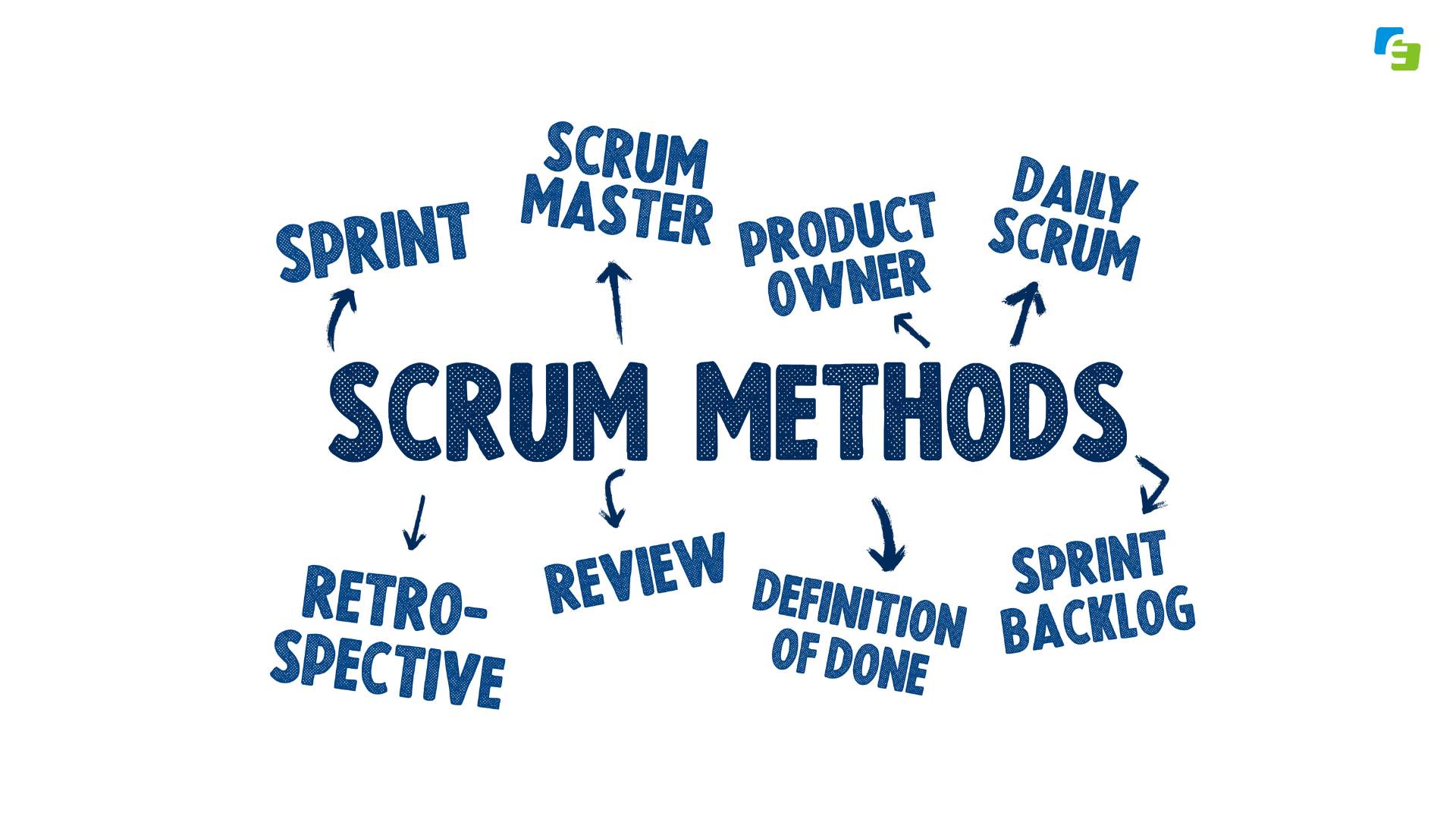What is Scrum?
Scrum is a powerful Agile framework used in project management, predominantly in software development, but its principles are applied across various industries like marketing, manufacturing, education, and even the military. At its core, it promotes teamwork, accountability, and iterative progress toward a defined goal.
Scrum is centered around small, cross-functional teams working in short, iterative cycles known as sprints. These sprints typically last two to four weeks, enabling teams to continuously inspect and adapt, thereby fostering a highly flexible and adaptive environment. It’s structured events and artifacts provide a clear framework while allowing flexibility and creativity within its boundaries.
History of the Scrum Framework
Scrum has a rich history that dates back to the early 1990s. Jeff Sutherland and Ken Schwaber are credited with creating Scrum as we know it today. However, its roots can be traced back to a 1986 paper by Hirotaka Takeuchi and Ikujiro Nonaka, titled “The New New Product Development Game,” which laid the foundation for Scrum’s team-centric approach .
Origins and Evolution of Scrum
In 1995, Jeff Sutherland and Ken Schwaber presented Scrum at the Object-Oriented Programming, Systems, Languages & Applications (OOPSLA) conference, marking its official debut. Since then, it has evolved through continuous refinement and adaptation to emerging needs.
Key Contributors to Scrum
Besides Sutherland and Schwaber, key contributors include Ken Rubin and Mike Cohn, who have written extensively on Scrum and Agile methodologies. They helped shape the framework and its guiding principles, contributing to its widespread adoption.
Milestones in Scrum’s Development
Over the years, Scrum has seen significant milestones, with the release of the Agile Manifesto in 2001 being a notable one . This manifesto, signed by 17 industry leaders, including Schwaber and Sutherland, outlined the core values and principles of Agile, reinforcing Scrum’s place within the Agile landscape.
How Scrum Differs from Traditional Project Management?
Unlike traditional project management methods that rely on detailed planning and control, Scrum adopts a more flexible and adaptive approach. Traditional methods often follow a linear, sequential process (like Waterfall), while Scrum uses an iterative process, allowing for continuous feedback and improvement. This adaptability makes Scrum ideal for dynamic and fast-paced environments where requirements may change frequently.
Agile vs. Scrum
Agile is a set of principles guiding project management and software development, emphasizing flexibility, collaboration, and customer satisfaction. Agile encompasses various methodologies, including Scrum, Kanban, and Lean.
Scrum is a specific framework within the Agile umbrella, characterized by time-boxed iterations called sprints, defined roles (Product Owner, Scrum Master, and Development Team), and regular ceremonies such as Sprint Planning, Daily Scrum, Sprint Review, and Sprint Retrospective.
Comparing Agile methodologies, Scrum is known for its structure and clear guidelines, while Kanban focuses on visualizing workflow and limiting work in progress. Lean emphasizes eliminating waste and continuously improving processes. Each methodology has unique strengths, with Scrum providing a structured approach to project management.
The Scrum Framework
The Scrum framework comprises several key elements that guide its implementation. These include core principles and values, roles within the Scrum team, and a set of artifacts that support iterative development.
At the heart of Scrum are its core principles and values: transparency, inspection, and adaptation. Scrum promotes openness and communication, enabling teams to continuously inspect their progress and adapt to changes. This framework is designed to foster teamwork and accountability, empowering teams to take ownership of their work.
Scrum differs from traditional project management approaches in its iterative nature and focus on self-organizing teams. Traditional methods often follow a linear, waterfall-style process, while Scrum encourages iterative development and regular feedback to deliver incremental value.
The Scrum Team
A Scrum team consists of three key roles: Product Owner, Scrum Master, and Development Team. Each role has specific responsibilities to ensure the success of the Scrum process.
- Product Owner: Responsible for defining the product vision and managing the Product Backlog, the Product Owner acts as the bridge between stakeholders and the development team. This role prioritizes backlog items based on business value and ensures the team is aligned with customer needs.
- Scrum Master: The Scrum Master facilitates the Scrum process, ensuring the team adheres to Scrum principles and practices. They serve as coaches, removing obstacles and fostering a collaborative environment.
- Development Team: This group of professionals is responsible for delivering the product incrementally. The team is self-organizing and cross-functional, with the skills to complete all aspects of product development.
These roles are designed to promote collaboration and accountability within the Scrum framework, enabling teams to deliver high-quality products efficiently.
Scrum Artifacts
Scrum artifacts provide structure and support for the Scrum process. The three main artifacts are the Product Backlog, Sprint Backlog, and Increment.
- Product Backlog: This is a dynamic list of features, requirements, and improvements the team plans to address in future sprints. The Product Owner manages the backlog, ensuring it’s prioritized and updated as needed.
- Sprint Backlog: Created during Sprint Planning, this artifact contains the tasks and goals the team commits to achieving during a specific sprint. It serves as a guide for the Development Team’s work.
- Increment: The Increment represents the product’s most recent completed version. At the end of each sprint, the team produces an Increment that meets the Definition of Done, providing a potentially shippable product.
These artifacts help maintain focus and structure throughout the Scrum process, allowing teams to work collaboratively and adapt to change.
Scrum Ceremonies or Events
Scrum includes several key events or ceremonies that structure the framework. Each event has a specific purpose, contributing to the overall success of the Scrum process.
- Sprint Planning: This event occurs at the beginning of each sprint, where the team discusses the goals for the upcoming sprint and creates the Sprint Backlog. The Product Owner presents the top priorities from the Product Backlog, and the Development Team selects the items they can complete within the sprint’s timeframe.
- Daily Scrum: A short daily meeting where the Development Team discusses progress, plans, and any obstacles they encounter. It fosters collaboration and helps keep the team aligned.
- Sprint Review: Held at the end of each sprint, the Sprint Review allows the team to showcase the Increment to stakeholders. This event provides an opportunity for feedback and helps the team align with customer expectations.
- Sprint Retrospective: The final event in the sprint, the Sprint Retrospective, focuses on continuous improvement. The team reflects on the sprint, discussing what went well and what could be improved. This event promotes a culture of learning and adaptation.
These ceremonies ensure the Scrum framework’s smooth operation, providing opportunities for feedback and continuous improvement.
The Five Scrum Values
The Scrum framework is guided by five core values: Commitment, Courage, Focus, Openness, and Respect. These values underpin the entire Scrum process and influence team behavior.
- Commitment: Scrum teams commit to achieving sprint goals and delivering high-quality work.
- Courage: Teams have the courage to face challenges and make tough decisions in pursuit of continuous improvement.
- Focus: The focus is on sprint goals, allowing teams to deliver consistent results.
- Openness: Teams maintain open communication and transparency throughout the Scrum process.
- Respect: Respect among team members fosters collaboration and trust.
These values create a strong foundation for Scrum, promoting a collaborative and adaptive culture within teams.
Scrum, Kanban, and Agile
Scrum and Kanban are two popular Agile methodologies with distinct approaches to project management. While Scrum focuses on time-boxed iterations and defined roles, Kanban emphasizes visualizing workflow and limiting work in progress.
In Scrum, sprints are typically 2-4 weeks long, with defined ceremonies and artifacts. Kanban uses a visual board to track work items, allowing teams to manage flow and adjust priorities as needed. Kanban is often used in operations and support environments where work is continuous.
Despite their differences, Scrum and Kanban share common Agile principles, such as flexibility and a focus on delivering value. Both methodologies can be adapted to various industries, depending on the team’s needs and workflow.
How to Get Started with Scrum?
To get started with Scrum, it’s essential to understand the framework’s core principles and establish the necessary roles within your team. Here are some steps to help you implement Scrum in your organization or team:
- Learn the Basics: Familiarize yourself with Scrum principles, roles, and ceremonies. Consider attending a Scrum training course or reading authoritative resources like the Scrum Guide .
- Appoint Roles: Identify individuals for the Product Owner, Scrum Master, and Development Team roles. Ensure they understand their responsibilities and the collaborative nature of Scrum.
- Establish Ceremonies: Schedule regular Scrum ceremonies, such as Sprint Planning, Daily Scrum, Sprint Review, and Sprint Retrospective. These events provide structure and support for the Scrum process.
- Create Backlogs: Develop a Product Backlog with input from stakeholders and prioritize items based on business value. During Sprint Planning, create a Sprint Backlog for each sprint.
- Start Small: Begin with a pilot project to test Scrum implementation. This allows you to identify challenges and make adjustments before scaling Scrum across the organization.
Transitioning from traditional project management to Scrum may present challenges, such as resistance to change or difficulties in adopting Agile practices. Address these challenges by fostering a culture of collaboration and continuous improvement, and by providing adequate training and support to team members.
We hope this blog has provided valuable insights. We encourage you to share your experiences or ask any questions you may have about Scrum. Additionally, we invite you to explore more blogs at Ezeiatech.







